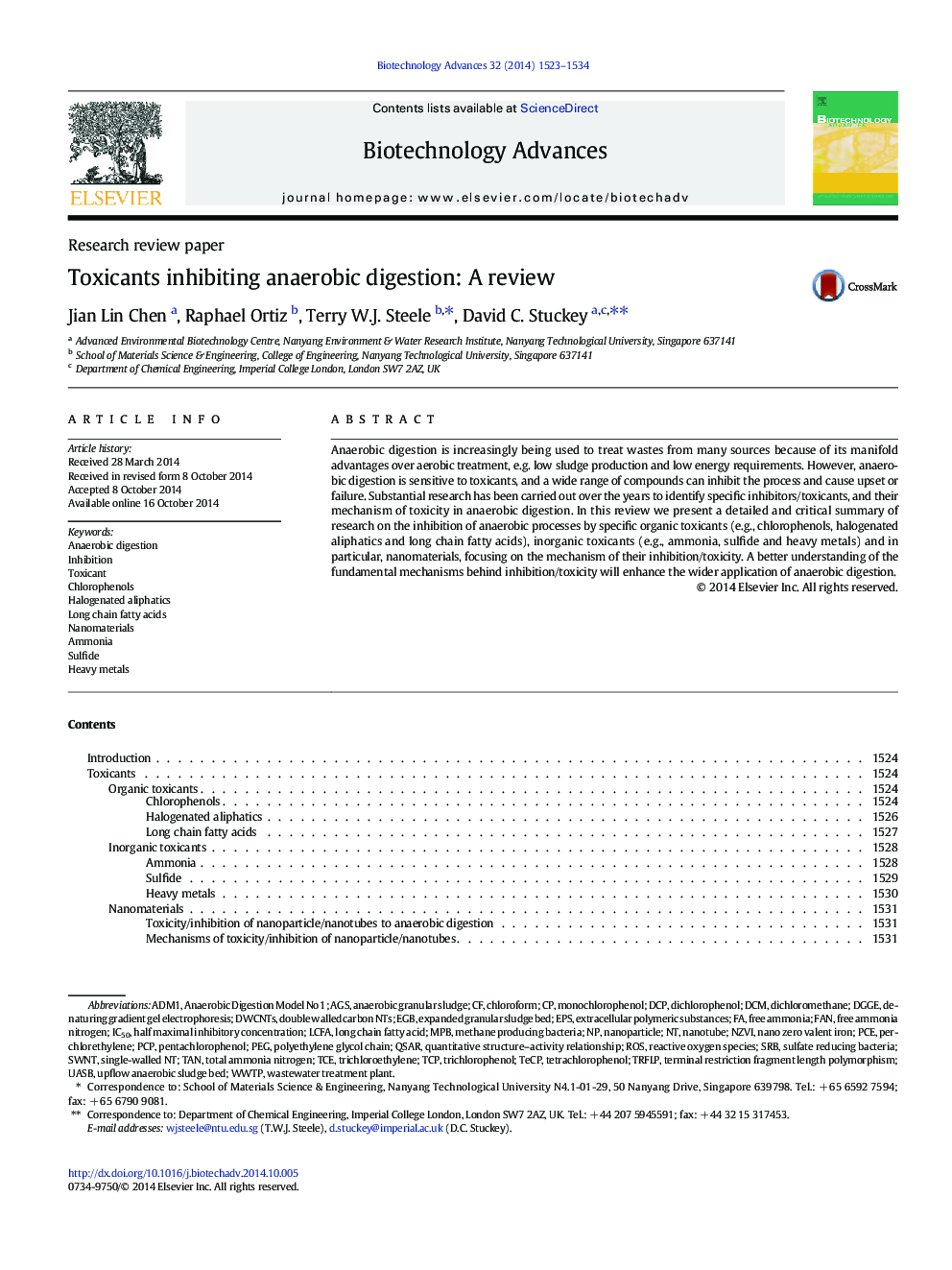| Article ID | Journal | Published Year | Pages | File Type |
|---|---|---|---|---|
| 14291 | Biotechnology Advances | 2014 | 12 Pages |
•Critical review of anaerobic toxicity focusing on fundamental mechanisms•Looks at specific organics — chlorophenols, halogenated aliphatics, and long fatty acids•Looks at specific inorganics — ammonia, sulfide and heavy metals•Looks at novel nanomaterials and how they inhibit anaerobes•Need to develop toxicity sensors with rapid response times
Anaerobic digestion is increasingly being used to treat wastes from many sources because of its manifold advantages over aerobic treatment, e.g. low sludge production and low energy requirements. However, anaerobic digestion is sensitive to toxicants, and a wide range of compounds can inhibit the process and cause upset or failure. Substantial research has been carried out over the years to identify specific inhibitors/toxicants, and their mechanism of toxicity in anaerobic digestion. In this review we present a detailed and critical summary of research on the inhibition of anaerobic processes by specific organic toxicants (e.g., chlorophenols, halogenated aliphatics and long chain fatty acids), inorganic toxicants (e.g., ammonia, sulfide and heavy metals) and in particular, nanomaterials, focusing on the mechanism of their inhibition/toxicity. A better understanding of the fundamental mechanisms behind inhibition/toxicity will enhance the wider application of anaerobic digestion.
